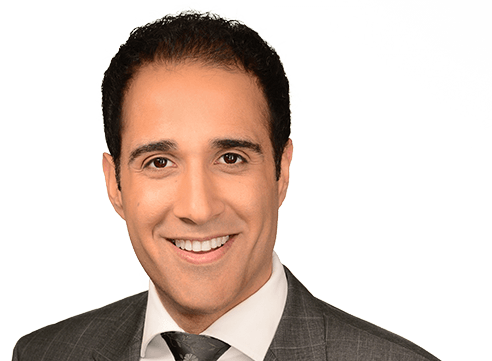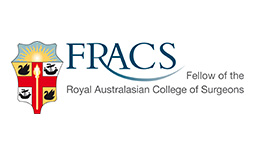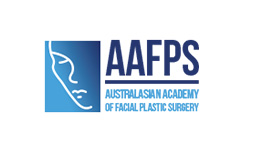Dr. Choroomi uses the latest technology and medical treatments to diagnose and manage nasal and sinus conditions. His advanced skill and minimally invasive techniques help patients live more comfortable lives by relieving the pain and pressure associated with chronic sinusitis.
Blocked nose / sinus
Why is my nose blocked?
Firstly our sinuses are hollow, air filled cavities that sit behind the forehead and cheeks. We all have four pairs of sinuses. Each sinus is lined with soft tissue and covered with hair-like cilia. The lining and cilia help filter out environmental irritants such as dust, pollen, and germs from the air. The inside lining of our sinus is very sensitive, when there is high exposure to these irritants it swells resulting in a blocked nose.
What is Sinusitis?
Swelling of the nasal lining may prevent the sinuses from draining properly. When bacteria or viruses are not removed from the sinuses they grow then developing into an infection called sinusitis.
Chronic sinusitis cases can last for more than 12 weeks and may continue to progress for months, even years. Sinusitis can often be treated medically with antibiotics, oral steroids, steroid based sprays or immunotherapy. When medical treatment proves to be ineffective, Dr. Choroomi will then recommend sinus surgery as a minimally invasive alterative for treating chronic sinusitis.
Symptoms of Sinusitis:
- Facial pain, Pressure, Headache
- Ongoing Congestion
- Mucous Discharge
- Vision Disturbances
- Recurrent Nasal Obstruction
- Nose Bleeds
- Poor Recovery from Colds
- Poor Sense of Smell
Am I a Candidate for Sinus Surgery?
Patients with chronic or recurrent sinusitis, nasal polyps, or breathing issues who have exhausted other medical treatments may benefit from sinus surgery. Dr. Choroomi performs sinus surgery only after medical treatment has failed. Before recommending sinus surgery Dr. Choroomi will:
- Request a full sinus medical history
- Examine the inside or your nose with endoscopic cameras
- Perform a CT scan of your sinuses
Based on your discussion and his assessment, Dr. Choroomi can determine if sinus surgery is right for you. Each patient is unique, therefor, specific questions regarding surgical procedure, recovery risks, and results will be discussed in detail at your consultation to ensure you are fully informed and comfortable with your surgical plan.
How is Sinus Surgery Performed?
Functional Endoscopic Sinus Surgery (FESS) is one of the most common ways to treat a chronic sinus condition. The goal of FESS is to improve sinus drainage and reduce blockage without affecting the shape of your nose, cheeks or eyebrows.
Sinus surgery is performed under general anaesthesia using a endoscopic camera. This small camera provides Dr Choroomi with a clear view inside the nose to:
- Widen sinus openings
- Remove polyps that may have formed
- Remove any bony abnormalities that are blocking sinus cavities
- Suction mucus, infection and fungus from inside the nasal cavity
In more complicated cases Dr Choroomi may use Image Guidance technology, working like a GPS, guiding him to the targeted area within your sinuses. Unlike older forms of sinus surgery, these modern, non-invasive technologies help treat sinusitis with minimal discomfort, shorter recovery periods, and reduced risk of infection.
Recovery after Sinus Surgery
The majority of patients will experience significant improvement immediately after sinus surgery. However, depending on the type and extent of surgery it may take weeks before you start feeling better. Before and after surgery, Dr. Choroomi will give you specific recovery guidelines to follow.
After surgery you can expect:
- Your nose to be packed with dissolving material. This material does not need to be removed which can become discomforting.
- Gauze dressing placed under your nose, like a mustache, to capture any mild oozing. The gauze may typically be removed after 1-2 days.
- If a deviated septum was corrected, splints are placed inside your nose for one week.
- Mild congestion, like you have a cold or flu, can last up to a month.
One week after surgery Dr. Choroomi will suction your nose to remove dried blood and mucous. You will need to spray and rinse your nose with saline regularly to remove dry blood and keep the nose moist. This rinsing will need to be continued several months after your procedure. You may return to normal activity 7-10 days after surgery.
Sinus Surgery is often performed in combination with:
- Deviated Septum Surgery is performed to straighten a bent septum, the cartilage that separates your nostrils. When the septum is bent it can cause breathing issues that affect sleeping and the quality of life.
- Turbinate Reduction Surgery. The turbinates are natural air filters responsible for warming, humidifying and filtering air. These filters can become swollen and enlarged, blocking airflow through the nose. Reducing the size of your turbinates can relieve a blocked nose and congestion.
- Cosmetic Rhinoplasty. A primary rhinoplasty can be performed in combination with sinus surgery to change the aesthetic shape of your nose. By combining these procedures patients have one recovery and less downtime.
- Functional Rhinoplasty. This procedure may be performed with sinus surgery to correct specific problems affecting your breathing.
- Broken Nose Surgery may be performed the same time as sinus surgery.








